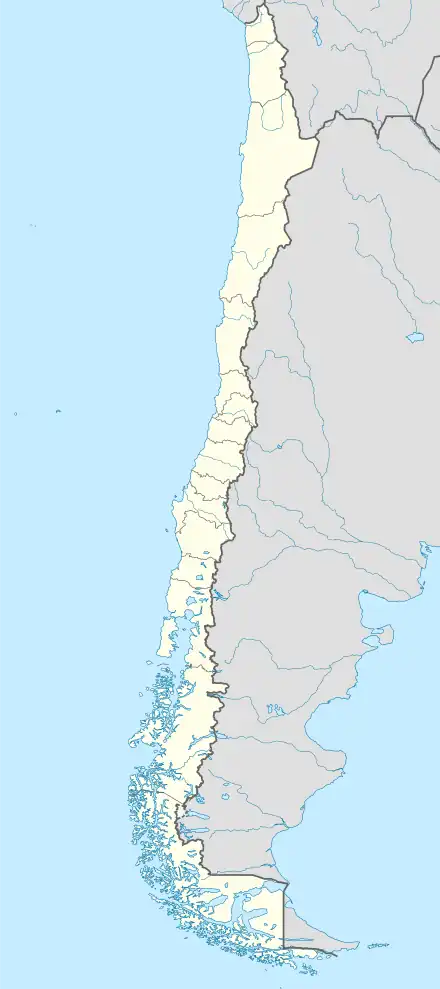Guamblin Island
Guamblin Island, also known as Socorro Island, Nuestra Señora del Socorro, or Huamblin, is a Chilean island located in the Pacific Ocean. The island is designated as a National Park and is recognized as an Important Bird Area due to its significance as a breeding ground for the sooty shearwater.[1] Although Guamblin Island has never been permanently inhabited, it holds a historical significance and has been the site of notable events.
Native name: Isla Guamblin | |
|---|---|
 Guamblin Island | |
| Geography | |
| Coordinates | 44.85°S 75.08°W |
| Adjacent to | Pacific Ocean |
| Length | 16 km (9.9 mi)N-S |
| Width | 8 km (5 mi)W-E |
| Administration | |
| Region | Aysén |
| Province | Aysén |
| Commune | Cisnes |
| Additional information | |
| NGA UFI=-883679 | |
Early history and expedition
The island was originally named Isla de Nuestra Señora del Socorro. In 1724, the Commercie Compagnie, a Dutch trading company, dispatched two frigates known as Don Carlos and Don Louis on an expedition to the region. However, this expedition was considered illegal, as Spain held exclusive trading rights in that part of South America. To avoid detection by Spanish ships, the frigates were given Spanish names and flew Spanish flags. Each ship was armed with 34 guns and carried approximately 120 men, predominantly from Zeeland in the Netherlands, with some crew members originating from Germany and Scandinavia.
On the night of January 31 to February 1, 1725, while the ships were positioned at 48 degrees south latitude, a loud crackling sound was heard aboard the Don Louis, resulting in the mast being torn. By May 15, the ship had become extensively leaky and was in dire need of provisions. The crew embarked on a search for land, and Guamblin Island came into view. Based on old maps, the crew assumed it to be the island of Nuestra Señora del Socorro, which later came to be known as Guamblin Island. Upon their arrival, they discovered no inhabitants, and it appeared uninhabited.
Laurens Wartels, the steward of the Don Louis, along with two sailors, suggested staying on the island overnight to gather food and prepare it for the sick. The captain approved of this plan and left supplies behind in case they were unable to return to the ship in the coming days. Unfortunately, a severe storm prevented the ship's sloop from reaching the island, and most of the anchor ropes broke, leaving the ship with only one anchor. As a result, the ship drifted towards the coast, endangering the crew.
It wasn't until 26 October that the crew managed to reach Guamblin Island. Upon arrival, they noticed that the large tent built for the sick earlier in May had been toppled, but a smaller tent was present, presumably constructed by the three men who had stayed behind. As they approached the tent, they discovered the three men dead. It appeared that they had succumbed to hunger and cold. Despite the island having no history of permanent human habitation, the crew proceeded to bury the deceased sailors.
Oil spill incident
In another unfortunate incident, the Liberian oil tanker Napier ran aground on Guamblin Island in June 1973. This incident resulted in an oil spill of approximately 30,000 tons of oil. Following the rescue of the crew, Chilean Hawker Hunters were deployed to set the Napier ablaze and burn off the oil, thereby preventing further pollution.[2]
References
- BirdLife International: site fact sheet
- SIGWEB Sistemas integrados de Gestión, Carlos Saldivia, Las desconocidas historias de los tres derrames de petróleo en Chile Archived 2013-09-21 at the Wayback Machine, retrieved on 18 September 2013
External links
- The complete story of the Don Louis, by Laurens Beijen, July 30, 2020 (in Dutch) (Archived 18 April 2021 at the Wayback Machine)
- Islands of Chile @ United Nations Environment Programme
- World island information @ WorldIslandInfo.com
- South America Island High Points above 1000 meters
- United States Hydrographic Office, South America Pilot (1916)